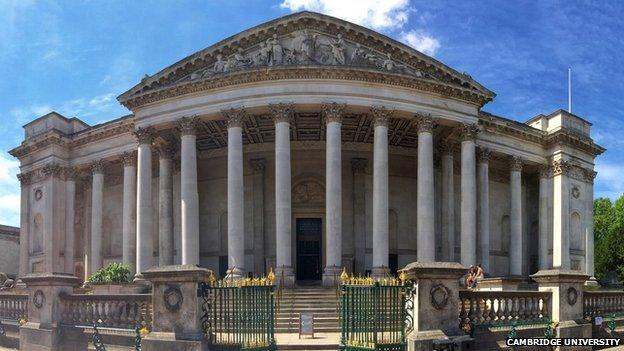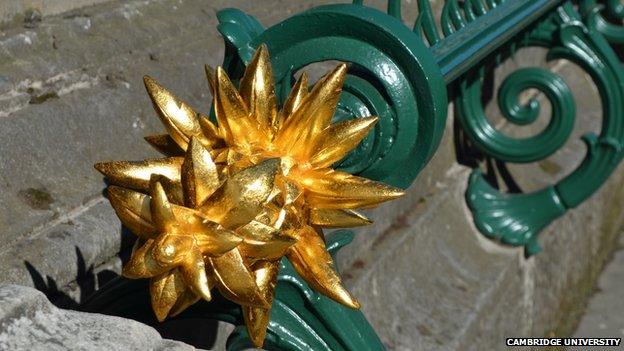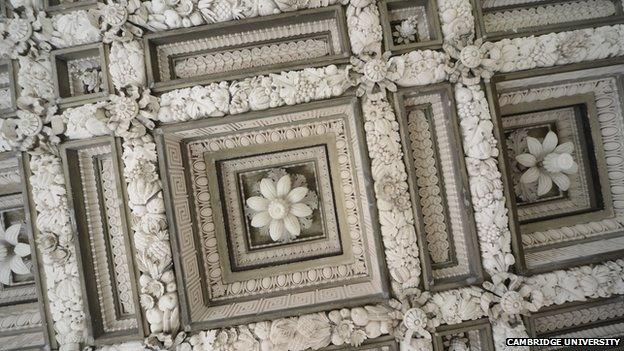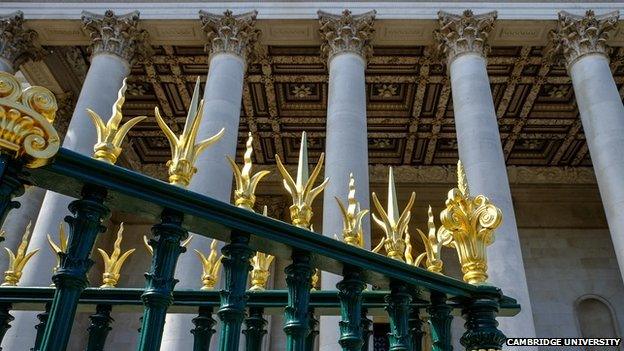Cambridge Fitzwilliam Museum's 'original splendour' restored
- Published

The Fitzwilliam Museum was built in the Neoclassical style and completed in 1848
Golden pineapples, giant plaster flowers and the colourful railings of a newly-restored Cambridge museum will greet the Tour de France cyclists as they ride past on Monday.
A year-long £430,000 project has returned the Fitzwilliam Museum on Trumpington Street to its "original splendour", director Tim Knox said.
Hundreds of packs of gold leaf were used to restore the outside railings.
They were painted black 100 years ago "to save money", Mr Knox said.
.jpg)
The restorers tested different shades of paint before finding one they were happy with
The Cambridge University-owned museum was completed in the Neoclassical style in 1848.
It has been more than 100 years since renovation of the museum portico has taken place.
Few - if any - residents or visitors will ever have seen the railings surrounding the building in their original bronze-green colours with giant golden pineapples.

About 200 packs of gold leaf were used on the new railings
These were covered in layers of black, but analysis of the paint revealed their former design.
"We don't really know why it was smothered in black paint, but it may have been due to the sheer expense of applying the gold leaf," Mr Knox said.
Although the colourful rails are an impressive "new" feature, other restoration work was essential for the safety of staff and visitors, as parts of the Grade 1-listed plasterwork in the portico was at risk of collapse after being damaged by a leak.

Parts of the ceiling were at risk of collapse after a leak in the roof
Parts of the frieze featuring sculptures of wild animals was also crumbling away.
The restoration of these areas was completed to coincide with the third stage of the Tour de France which will pass by the front of the Museum on its way out of the city at about 12:30 BST on Monday.

What did it take to restore the museum?
Nine tonnes of lead for the roof
200 packs of gold leaf for the railings
40kg (88lb) of rubber silicone for making moulds
15kg (33lb) of modelling clay for a new stag's head frieze
10 tubs of lime-wash for repainting

Mr Knox said: "We are incredibly grateful to the University of Cambridge for making this restoration possible.
"We hope that local residents and visitors to the City will enjoy seeing the building returned to its original splendour."

The completed restoration was timed to coincide with the Tour de France cyclists riding past on Monday